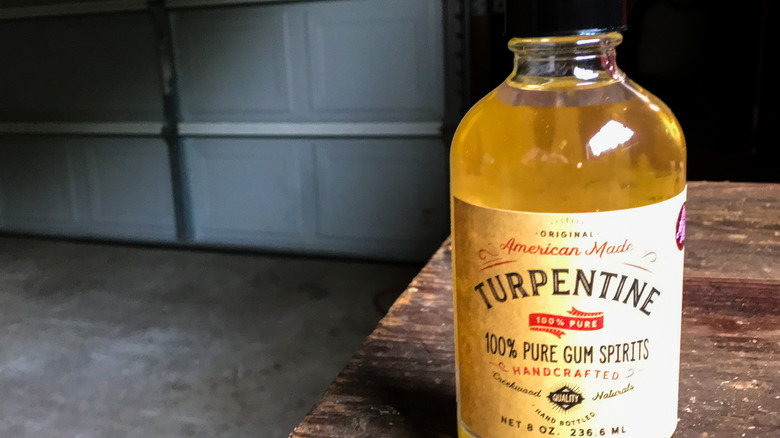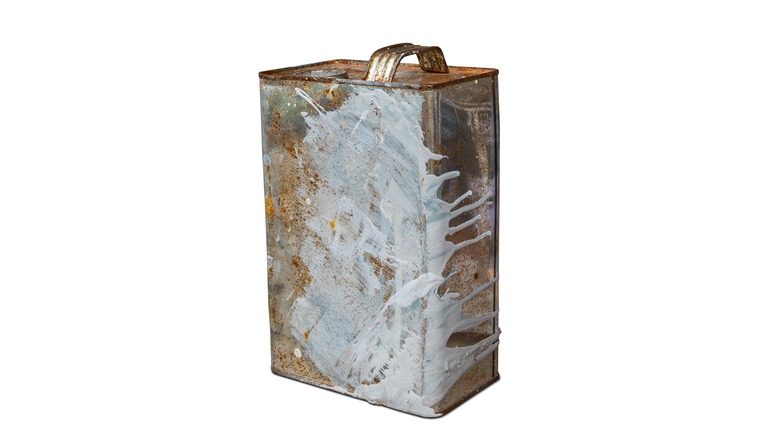The Right Way To Dispose Of Turpentine
Turpentine is an oily substance made from pine tree extracts and is commonly used as a solvent for thinning paint and other oil-based products. It is widely used in the chemical processing industry for synthesizing sulfur, resin, wax, and oil, according to Solvchem. There are various other home uses for turpentine, including waterproofing, lubricating, and sanitation, and while less common, it is also distilled for medical purposes or to add flavor to food and beverages.
While many people may use turpentine around the home, they may not know how to safely store, use, and subsequently, dispose of it. Turpentine is poisonous when ingested (if not food grade), notes Mount Sinai, which can lead to mild symptoms ranging from a headache to skin irritation, to more severe symptoms such as kidney failure, loss of vision, and seizures. Breathing in turpentine fumes can also cause lung irritation, a buildup of fluids, and shortness of breath. Moreover, as Firefighter Insider warns, it has a relatively low flash point and becomes flammable at only 95 degrees Farenheight. With all of this in mind, it is incredibly important that you know how to safely store and properly dispose of turpentine.
Treat as hazardous waste
Since turpentine is so highly flammable and dangerous if ingested, it should be treated as hazardous waste material, both in terms of storage and disposal. Generally, you should keep turpentine well sealed and in a cool, well ventilated, preferably dark area. According to How to Dispose, turpentine does dry out quite easily and items that are covered in turpentine (such as paintbrushes or rags), or containers with a small amount of product left, can be left out in a well-ventilated area to evaporate.
However, any container with more than 1/4 inch of turpentine should not be disposed of at home. It cannot be poured down a drain or thrown in the trash, as it could then be ingested, inhaled, or catch fire. Instead, store the turpentine in a metal container with a tight-fitting lid, contact your local hazardous waste facility, and they will give you directions on where and when to bring it in.

